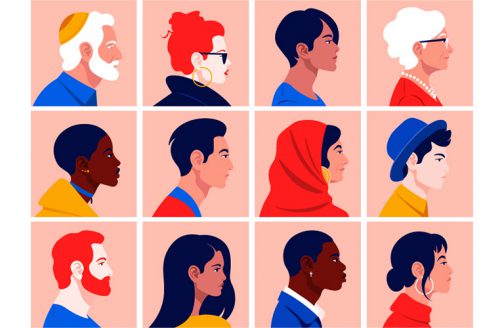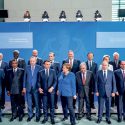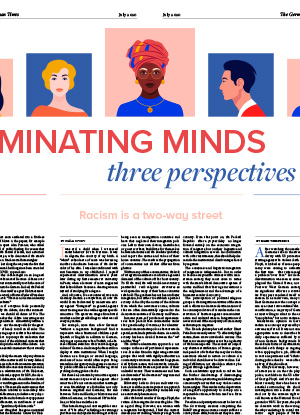Discriminating minds: Three perspectives on racism, part II
 SHUTTERSTOCK
SHUTTERSTOCK I was still a child when I eye-witnessed racist behavior for the first time. It was in Algeria, the country of my birth. A “white” schoolmate of mine was harassing another schoolmate because of the darker color of his skin. I was also confronted with anti-Semitism in my childhood. I myself experienced discrimination several years later during my first semester at university in Paris, when a lecturer of mine suggested that I should have become a cleaning woman instead of studying for a degree.
And, of course, I’ve encountered racism in Germany. Racism is everywhere, all over the world. It can be directed by mainstream society against “foreigners” in general, against minorities in general as well as against specific minorities. The spectrum ranges from brutal murders and targeted killings to what we call everyday racism.
For example, more than a few Germans “without a migration background” find it impressive when binational children speak Spanish or English in addition to German, only to get up in arms when Turkish or Lebanese children switch to their native language in lieu of German. And xenophobia is still on display at state institutions. When I taught German as a foreign or second language, students of mine would often report being treated in a derogatory and aggressive manner by public officials as well as suffering racial profiling during police checks.
But there’s also racism by minorities against mainstream society as well as against other minorities. It’s not uncommon that marriages or even friendships are forbidden not only between migrants and Germans, but also between Turks and Kurds, or Moroccans and African-Germans, or Sunni and Shi’ite Muslims, or Muslims and atheists.
This humiliating and contemptible treatment of “the other” is finding ever-stronger purchase in schoolyards. Mobbing at schools based on religious affiliation, ideology, sex, origin or skin color is nothing less than a portent of anti-Semitism, sexism and racism. While mobbing was initially more noticeable among children from majority segments of society, it has now become more common among children with migration backgrounds.
As children often emulate their parents and others in their surroundings, it begs the question: Have some migrants become xenophobes themselves? Or are all people more or less racists?
When migrants leave their countries of origin, they need support and orientation in the countries where they settle. For decades, both France and Germany have resisted being seen as immigration countries and have thus neglected their integration policies. Left to their own devices, Gastarbeiter, or guest workers, build lives for themselves between factories and the Banlieue (suburbs) and import the norms and values of their home counties. The result is the propagation of communities not all that different from ghettos.
Within many of these communities, the lack of integration assistance reinforces a general dismissal of the culture of their host country. To fill the void, the well-trodden reactionary, patriarchal – read: religious – structures so widespread in many of their home countries take hold. The goal here has not been to foster integration, but rather to establish a parallel society defined by the norms of the cultures from which the newcomers came, cultures that are often diametrically opposed to the democratic societies of Germany and France.
In recent years, self-proclaimed representatives have placed these communities under their guardianship. Over time, their identitarian and communitarian policies have created a spatial, social and spiritual schism. As a result, society has been divided between the “we” and the “they.”
The divisive identitarian approach is not unique to these self-proclaimed representatives. It is also found in right-wing extremist groups that work with rigidly authoritarian community structures and racist bogeymen. And by force: arson, violent attacks, intimidation and death threats are just some of their unlawful tactics. Their resentment and hate are directed at “Mediterranean” migrants and Jewish compatriots.
If diversity leads to division and racist violence, it is all the more important to approach racism proactively, objectively and assertively as a universal phenomenon.
After the brutal murder of George Floyd, the racism debate reignited across the globe. This is a good thing. However, as a woman with a migration background, I find the current discussion surrounding “white privilege” both ethnocentric and misleading. “Being white” once again dominates the discourse as human rights violations are displaced from center stage. This is the approach of several no-doubt well-intentioned anti-racist activists. But their proponents should be aware that they are once again reducing individuals to the color of their skin.
The idea here is to target the unjust system, not the people it represents. The goal should be to combat the causes and instruments that prevent the equitable and respectful coexistence of fellow humans.
Only in 2005 did the Federal Office for Migration and Refugees (BAMF) introduce an integration course for newcomers to the country. From that point on, the Federal Republic – after a 50-year delay – no longer focused entirely on the economic integration of migrants, but on their linguistic and cultural integration as well. In coordination with other instruments, this should help dismantle the institutional disadvantages faced by migrants.
The economic and linguistic integration of migrants is indispensable. But in order to become responsible citizens within mainstream society, they must come to terms with the state’s liberal democratic system of norms and find their bearings in relation to the enlightenment and the advantages of a humanist secular democracy.
The participation of political-religious groups in the integration activities of the state and in efforts to eliminate discrimination will be counterproductive. They are in fact the very people who constructed barriers of communitarianism and multiculturalism. Integration will never succeed if the anonymity of community is thrust upon migrants.
The French philosopher and author Henri Peña-Ruiz recently wrote: “To effectively fight racism, there are two invaluable maxims. The first is to remain vigilant as to the singularity of the human species. The second is to reject any abstract stratification of human groups, independent of whether this may derive from assertions related to nature or culture. An individual should never be drowned in a feeling of affiliation, nor should an ethnicity be judged through a global lens.”
This underscores that a relativistic approach to culture has the further disadvantage of discouraging migrants from questioning and debating their community’s norms that may violate certain human rights. This results in the deprivation of a migrant’s opportunity to develop into a responsible citizen, which in itself is a form of racism.
Freedom and participation must be learned. The 100 training sessions comprising the BAMF integration courses cannot suffice to convey these skills, but at least they’re a start. The path to self-determination is a lifelong learning process in which individuals recognize that they have rights but also obligations – and that these responsibilities should not be considered discriminatory in themselves. Individuals also learn that a modern, pluralistic society is built upon democratic and equitable consensus. Only a society comprising strongly emancipated individuals can demolish the walls that partition it.
Naïla Chikhi
born in 1980 in Algiers, is a cultural scientist who works as an independent advisor and consultant in the fields of integration and women’s issues.




